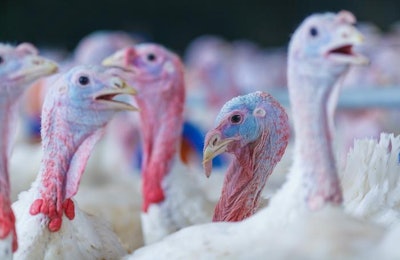
Depopulation of birds affected by H7N8 avian influenza by ventilation shutdown has been successfully implemented for the first time.
Within the past week, 10 Indiana turkey flocks have been affected by H7N8 avian influenza. Of those ten flocks, one was classified as highly pathogenic while eight others were of the low pathogenic strain. Tests conducted on the tenth flock have not yet determined whether the birds were affected by a highly pathogenic or low pathogenic strain.
According to information provided by the National Turkey Federation, six of the ten affected flocks were successfully depopulated by January 18, while depopulation efforts were underway in the other four. Ventilation shutdown was effectively utilized, according to NTF. In addition, depopulation by foaming was also done, but below freezing temperatures caused operational difficulties with foaming machines.
Ventilation shutdown was approved by the USDA in September as an emergency method to depopulate poultry flocks that have been affected by avian influenza. The agency approved the conditional use of ventilation shutdown because traditional depopulation methods did not always kill affected birds quickly enough to control the spread of the virus as effectively as desired. However, since the last time a U.S. flock had been infected with avian influenza was in June 2015, veterinary officials had not yet had the opportunity to implement ventilation shutdown until the Indiana flocks were infected.
See WATTAgNet's avian influenza map to track the cases of avian flu confirmed in 2016.


















